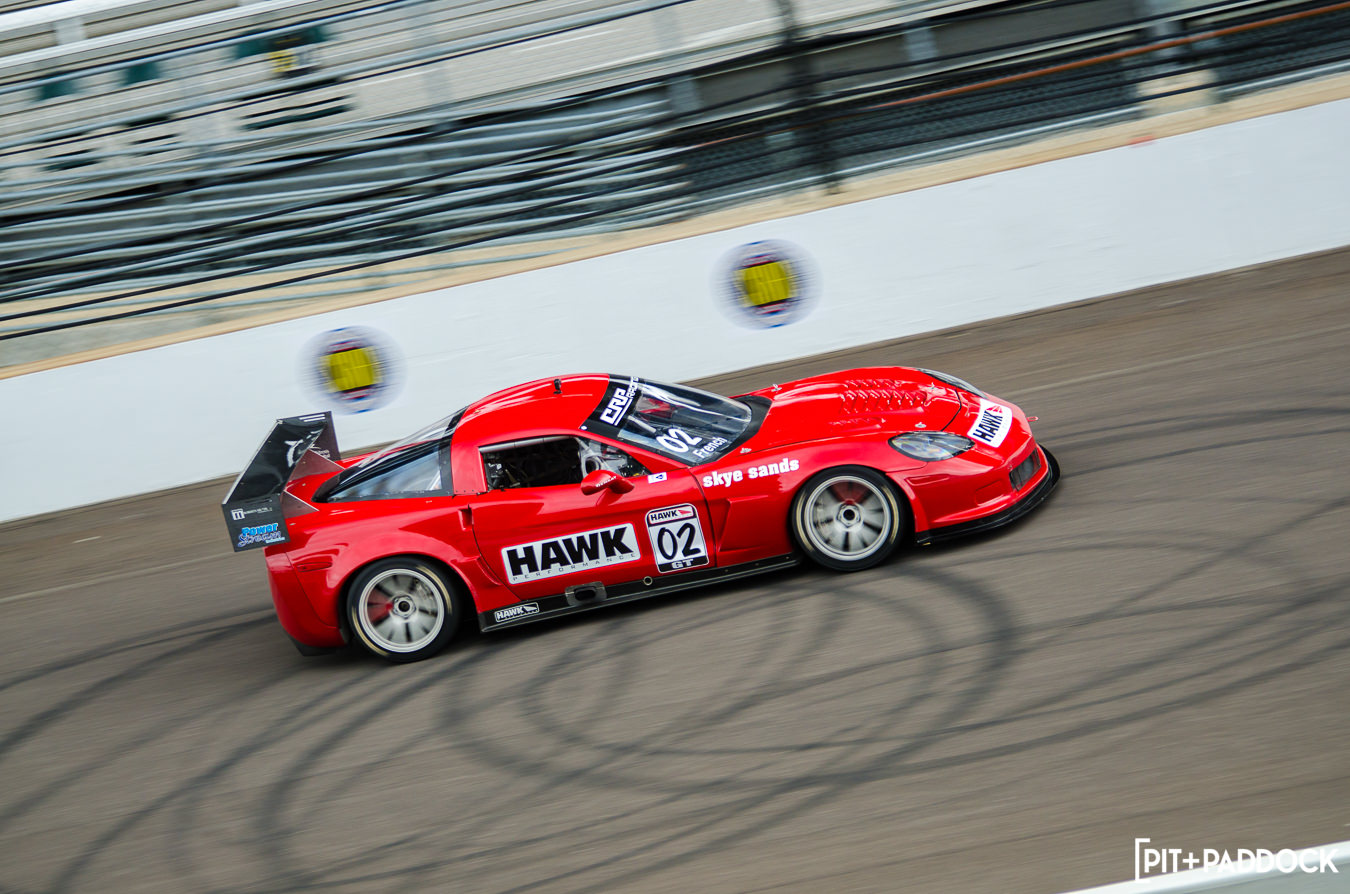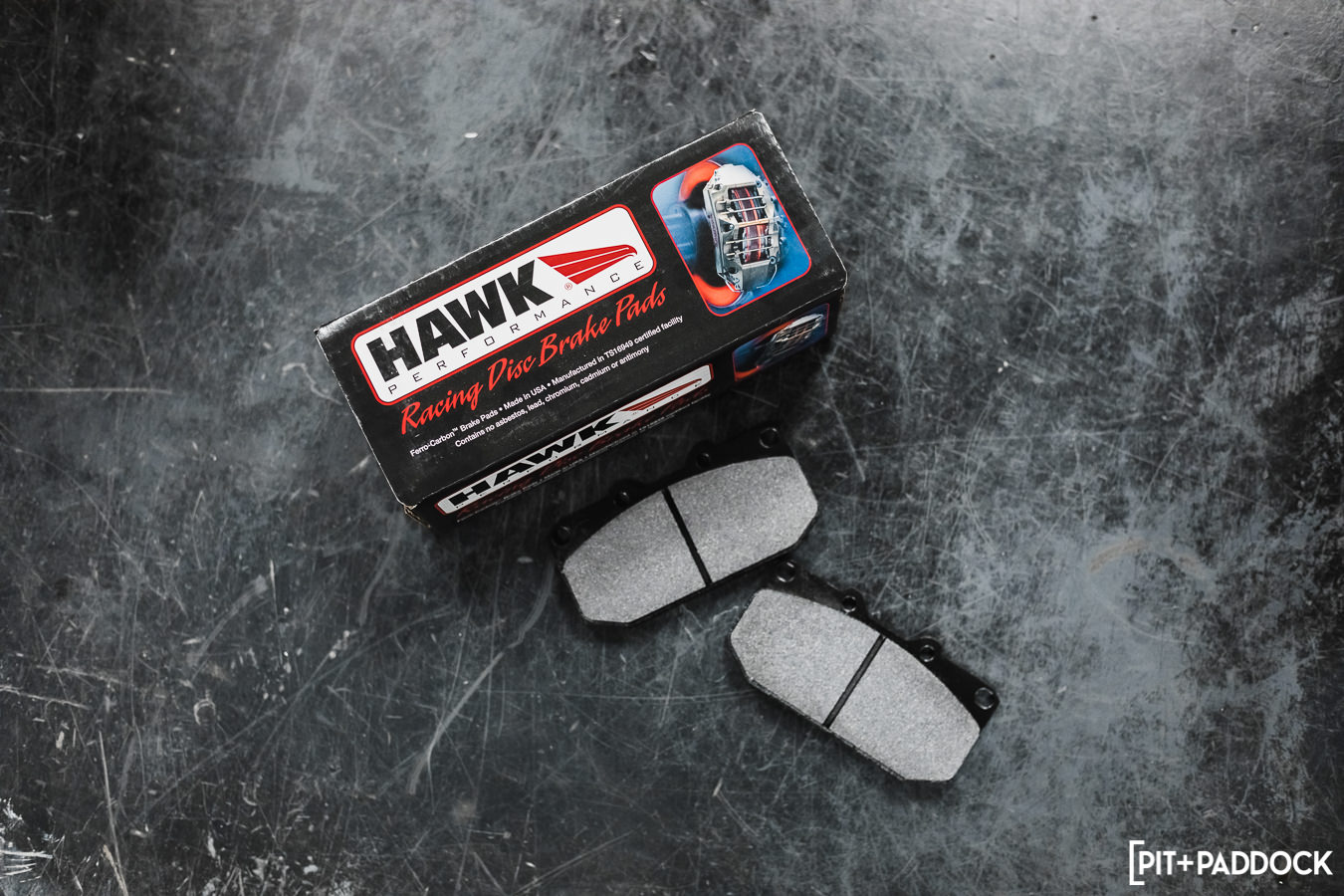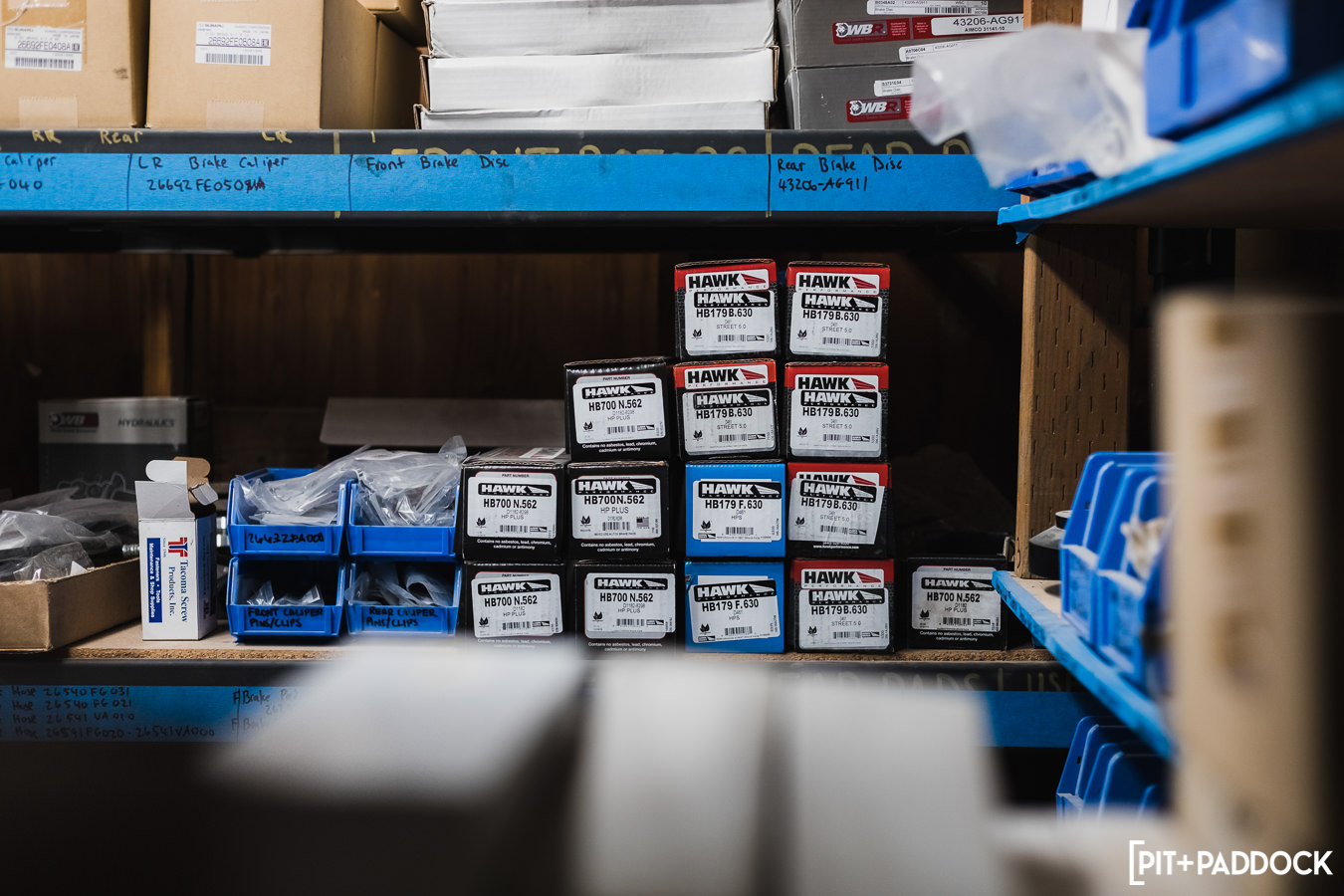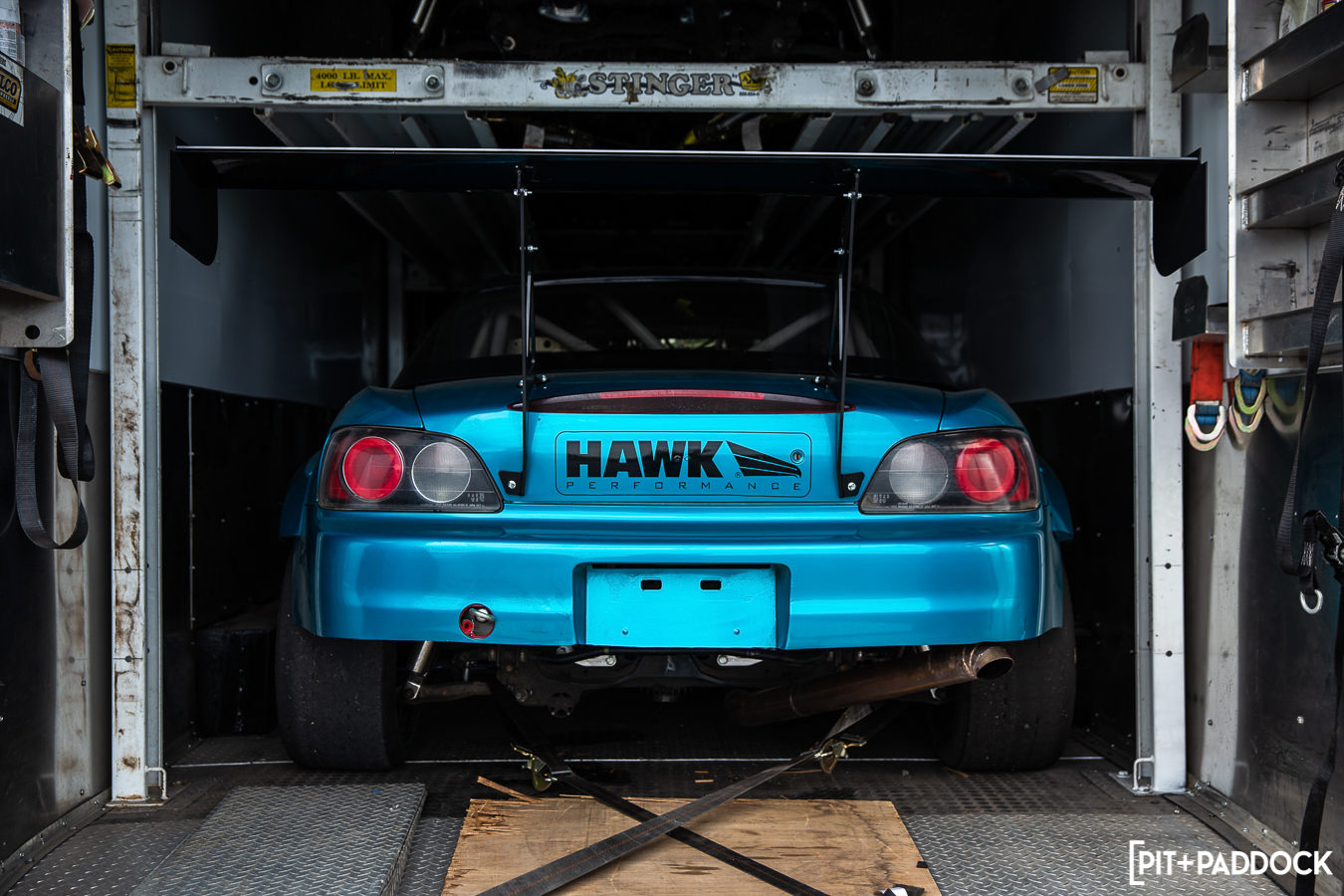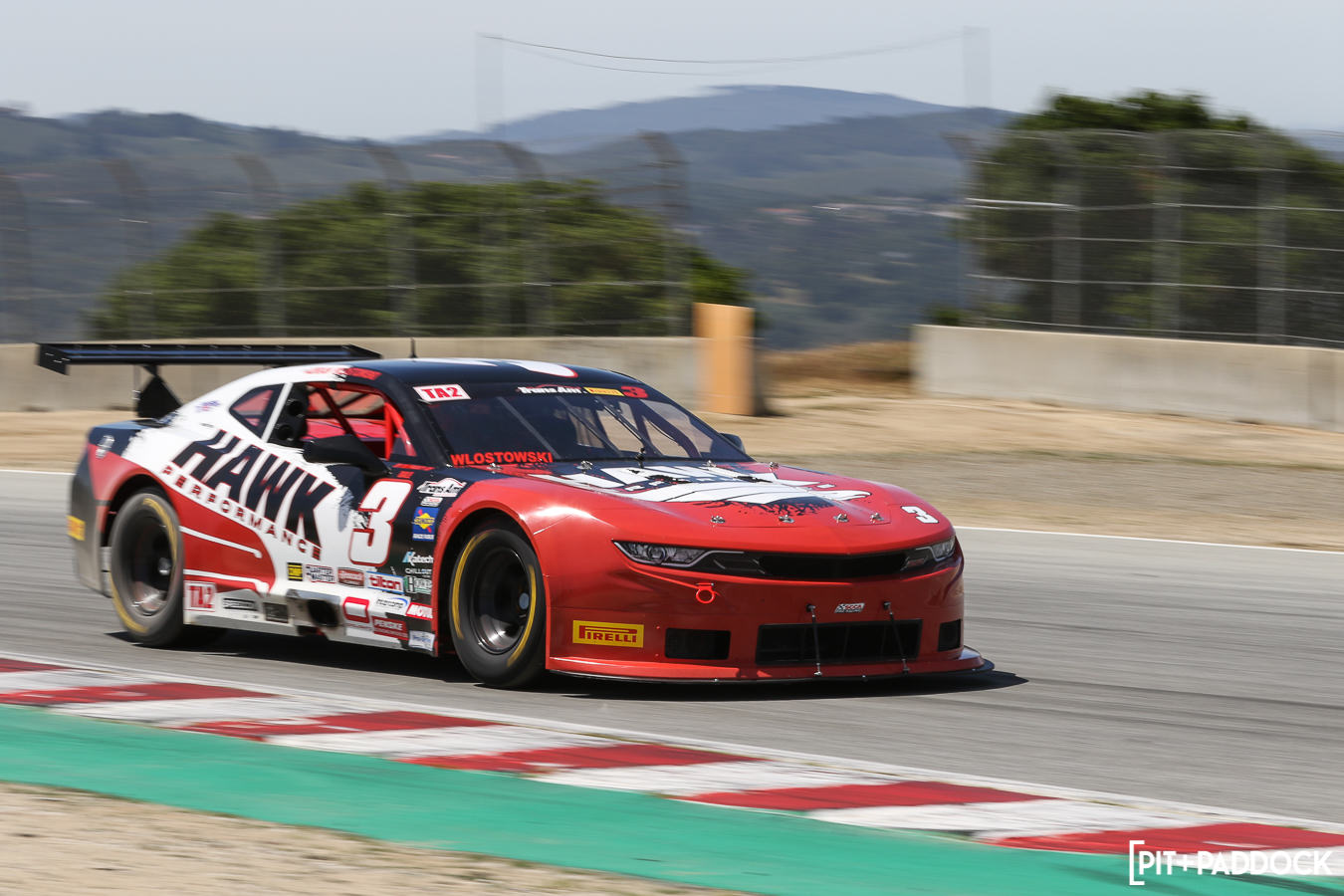
- Brake systems have many moving parts, but the information surrounding each part’s improvement is hazy.
- Formed in 1991, Hawk Performance has established itself as a world leader in the brake and friction compound industry.
- These four myths are surprisingly common amongst the automotive community, and we enlisted the help of braking experts to dispel them.
I’m sure I sound like a broken record, but braking systems are one of the most crucial pieces of a vehicle, in my opinion. I can’t emphasize this enough. Planting your right foot on the go pedal feels splendid, but the middle pedal keeps you safe, alive, and — depending on how you tune your brakes — may actually help your lap times drop! (Yes, slowing down helps you go faster.) However, there are a lot of misconceptions out there about how your car’s brakes impact stopping power, distance, and consistency. As we have in the past, we reached out to our resident braking experts over at Hawk Performance to put an end to these myths.
Hawk Performance has been a friction compound leader since 1991, when the company began offering its expertise to the world. The company’s Program and Marketing Manager, John Butler, is a wealth of knowledge on anything braking-related. Just so happens to be quite the writer himself, too. So, we pitched four common braking myths to him and let him loose to spread factual information.
“Stopping distance is determined almost solely by the brake pad compound and the tire. However, the vehicle’s ability to do so repeatedly and with consistency is determined by the packaging around the brake pad.” – John Butler, Program & Marketing Manager, Hawk Performance.
Myth 1: Bigger calipers/rotors mean shorter stopping distances
John Butler: The size of your caliper and rotor has everything to do with heat management and very little to do with stopping distances. The friction material (brake pad) that slows the rotation of the wheel and the capability of the tire to translate that to the pavement determines the stopping distance of a vehicle.
However, the vehicle’s capability to do this over and over again is where heat management comes into play. As the brakes get hotter, the performance of the brakes will change. Hawk Performance has a variety of brake pad compounds for the street and the track that are designed to function in different thermal ranges; however, every friction component is directly affected by its temperature. A larger rotor and caliper provide more thermal mass, meaning it takes more energy to heat up, and it can dissipate that heat more efficiently. This, combined with brake cooling ducts or other cooling techniques, help keep brake temperatures consistent and thus performance predictable.
Myth 2: Ceramic pads are better than non-ceramic
John Butler: Most brake pads have some level of ceramic content in them. However, brake pads branded as ‘Ceramic’ tend to have higher levels of ceramic and are often based on low-metallic compositions.
‘Ceramic’ pads are great options for street vehicles. Many modern performance cars such as Corvettes, BMWs, or Porsches come with high-performance brakes fitted from the factory. These often perform well on the street, but the brake pads create a lot of dust. Through years of development, aftermarket performance brake pads such as the Hawk Performance PC (Performance Ceramic) offer matched or improved performance to the OEM pads, but with dramatically decreased brake dust.
‘Ceramic’ pads tend to dust less than their metallic-based counterparts, and the dust they do create is often lighter in color and less noticeable. Ceramic pads have great initial bite characteristics on the street. However, high-performance semi-metallic pads such as the Hawk Performance HPS 5.0 tend to show more friction consistency when temperatures begin to stay above the 500-600ºF mark. For this reason, Hawk Performance recommends going with HPS 5.0 or HP+ for cars seeing autocross or aggressive canyon driving. For motorsport applications, Hawk Performance offers a variety of brake pad compounds for any type of racing.
Myth 3: Higher boiling point brake fluid helps stopping distance
John Butler: High-performance brake fluid will not change initial stopping distances. However, it will maintain those stopping distances through higher temperatures than standard brake fluid. You can stop equally as hard, but for longer. For this reason, high-performance brake fluid is an absolute must-have for any vehicle seeing track use.
Automotive brakes are hydraulic. The energy the brakes absorb by slowing the vehicle down creates heat. Heat can boil the hydraulic fluid (brake fluid). When the brake fluid inside your caliper boils, it releases gasses that are far more compressible than the fluid. Your brake pedal goes to the floor, but your calipers aren’t clamping the rotor, and you’re not slowing down.
Generally, most DOT4 or DOT5 brake fluids will perform similarly under their respective boiling points. The boiling points of brake fluid are measured in ‘dry’ and ‘wet’ boiling points, as well as their ‘minimum’ and ‘average’ boiling points.
A ‘dry’ boiling point is the temperature at which the brake fluid will begin to boil when new and free of any water content. For example, Hawk Performance HP520 brake fluid has a minimum dry boiling point of 500°F. HP660, a racing brake fluid, has a minimum boiling point of 608°F. This increased thermal capacity means the brake fluid can handle higher temperatures, meaning you can brake harder for longer.
A ‘wet’ boiling point is the same principle, but when the fluid has absorbed 3.7-percent water by volume. Brake fluid naturally absorbs moisture, which speeds up the more it’s exposed to the atmosphere. This water absorption dramatically impacts the fluid’s boiling point, bringing even a top-tier brake fluid such as Hawk Performance HP660 to 383°F, from 608°F. This is why brake fluid should always be bled and flushed, particularly in extreme use settings like motorsports.
Lastly, brake fluid is measured in ‘minimum’ and ‘average’ boiling points. Somewhat self-explanatory, the average temperature is the average temperature the fluid boiled, rather than the minimum temperature boiling was observed during testing. For example, Hawk Performance HP600 has a minimum boiling point of 572°F, with an average of 594°F.
Myth 4: Drilled/slotted rotors improve stopping distance
John Butler: Drilled and/or slotted rotors will not improve initial stopping distance. However, just like the upgrades we’ve discussed above, they do improve the performance consistency of the brake system as it gets hotter.
As a brake pad material gets hot, it releases gasses. This is called ‘outgassing.’ When outgassing occurs, it forms a thin layer of gas between the brake pad and the rotor. Just like hydroplaning for a tire, this layer of gas can dramatically affect how much friction the brake pad can create and, thus, how fast the vehicle can be slowed.
Like a tire tread, many brake pads have slots in them, allowing the gasses to have an escape route letting the brake pad retain its contact with the rotor. ‘Slotted’ or ‘Drilled & Slotted’ rotors such as Hawk Performance Talon Rotors offer another solution for outgassing. Slots or drilled holes in the rotor surface allow areas for the gas to escape, preventing it from obstructing the contact between the brake pad and rotor.
We want to thank John Butler of Hawk Performance for unloading his abundant knowledge regarding these topics. If you’re interested in learning more about Hawk Performance or its brake products, visit the company’s website for more information.

